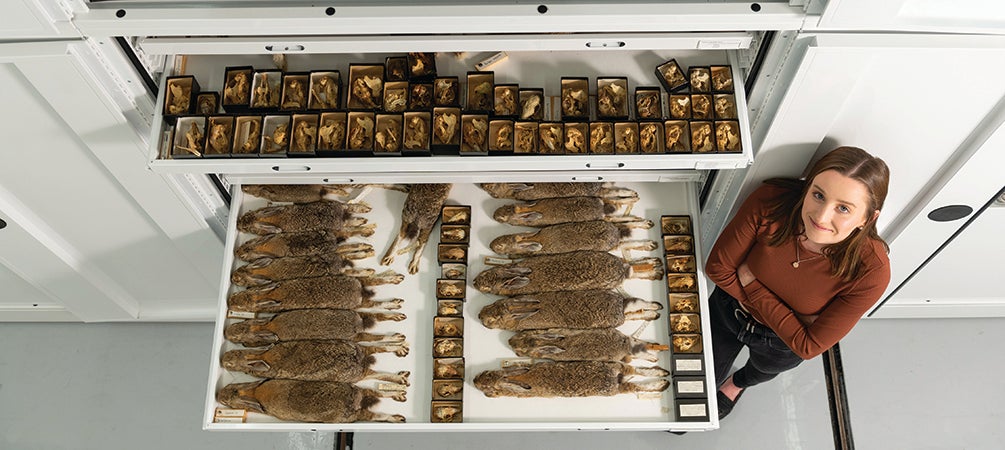by Lexi Frank, BS EEB, MPH Environmental Health Sciences

Lexi Frank with drawers of desert cottontail (Sylvilagus audubonii) specimens from California at the Research Museums Center.
Image: Austin Thomason
In a new building on the south side of Ann Arbor, in a white-walled, high-ceilinged room, are hundreds of drawers filled with thousands of dead animals. Why?
The Research Museums Center on Varsity Drive houses four large museum collections – anthropological archaeology, botany, paleontology, and zoology. The Museum of Zoology’s collections – with all the dead animals – date to the 1830s and include over 15 million specimens of amphibians and reptiles, birds, fishes, insects, mammals and mollusks.
For animal biologists, these collections help us learn more about animal health and ecological science. And maintaining the health of animal populations is vital to maintaining healthy ecosystems in every corner of the world.
But museum collections also support public health in rather significant ways, most importantly by enhancing our ability to understand the dynamic relationships between human and animal health and how disease might transmit between species. Using museum collections, epidemiologists and other public health researchers can more quickly identify potential sources of animal and human disease. They can more quickly understand the potential vectors and life cycles impacting the spread of those diseases.

